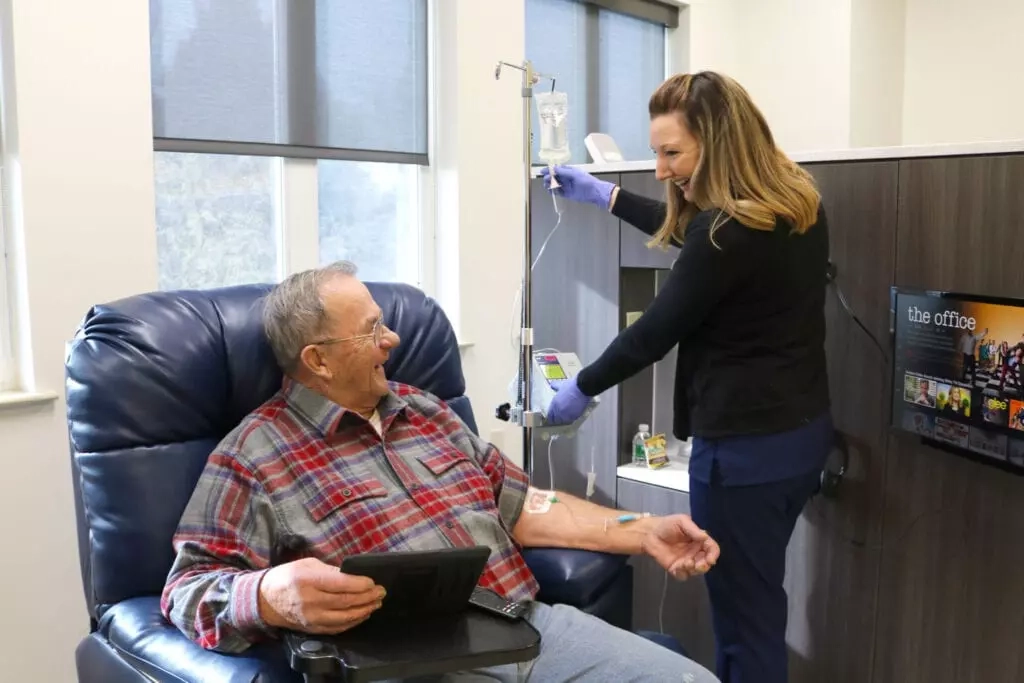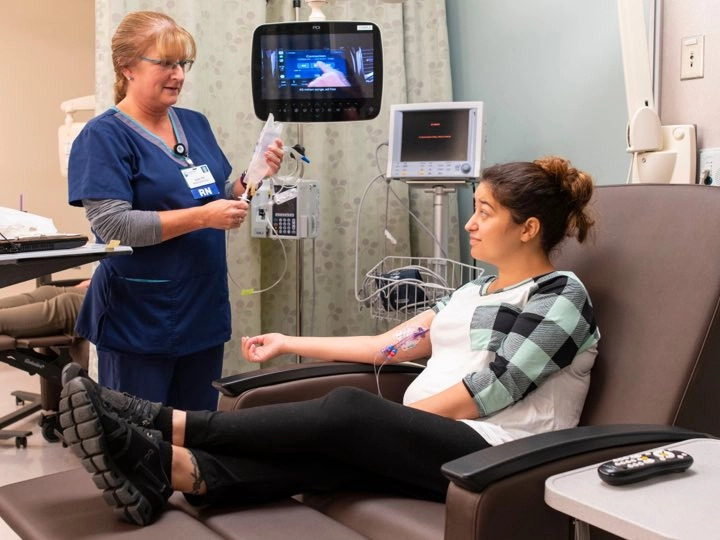Ankylosing spondylitis Infusion Therapy
Ankylosing spondylitis is a chronic inflammatory disease primarily affecting the spine and sacroiliac joints, causing pain, stiffness, and potential fusion of vertebrae over time. It typically begins in early adulthood, affects more men than women, and is associated with the HLA-B27 gene. Treatment focuses on managing pain, maintaining mobility, and slowing disease progression through medications, exercise, and physical therapy.

Symptoms

Symptoms
Symptoms of ankylosing spondylitis include:
- Lower back pain and stiffness
- Pain in buttocks and hips
- Neck pain
- Fatigue
- Reduced flexibility in spine
- Pain and stiffness in other joints
- Difficulty breathing (in advanced cases)
- Eye inflammation (uveitis)
- Loss of appetite
- Mild fever
Symptoms often worsen with rest and improve with activity. The disease typically progresses slowly, with periods of flares and remission.

Treatment Options
Treatment options for ankylosing spondylitis:
- Medications: NSAIDs, DMARDs, biologics
- Physical therapy and exercise
- Heat/cold therapy
- Lifestyle changes: posture, diet, smoking cessation
- Surgery (rare cases)
- Alternative therapies: acupuncture, massage
- Regular monitoring
Treatment aims to manage pain, maintain mobility, and slow progression.

Living With
Living with ankylosing spondylitis involves managing symptoms through regular exercise, maintaining good posture, taking prescribed medications, attending physical therapy, and working closely with healthcare providers to monitor disease progression and adjust treatment as needed.
Meet our Infusion Specialists
Jalal Thwainey M.D.
Medical Director
Emilie Wojcik, N.P.
Director of Clinical Services
For Provider
Simplify patient referrals and offer advanced treatment options with our infusion partnership program.
For Patient
There may be a better way to manage your condition – explore infusion therapy.





